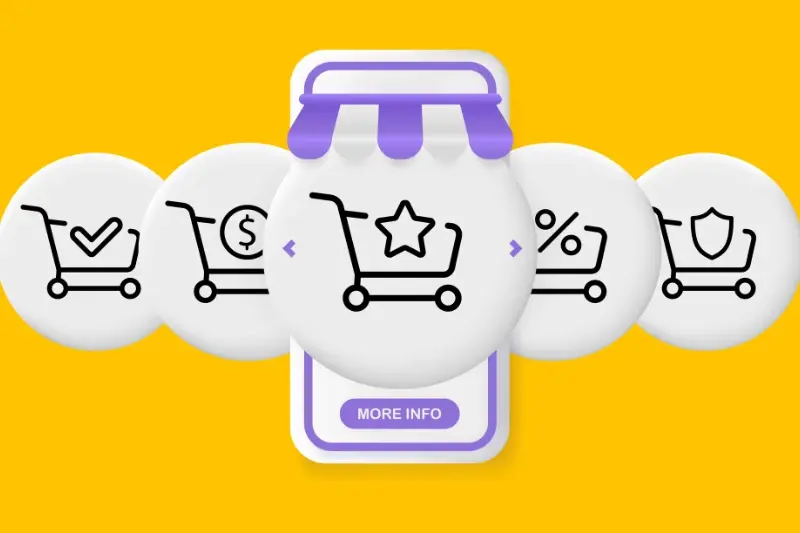How Colour Psychology Boosts App Store Conversion Rates
Studies show that people make subconscious judgments about an app within 90 seconds of seeing it, and up to 90% of that assessment is based on colour alone. That's right—before they've even read your app description or looked at your screenshots properly, potential users have already decided whether your app feels trustworthy, professional, or worth downloading. And yet most app developers still treat colour choices as an afterthought.
I've been working in mobile app development for years now, and I can't tell you how many times I've seen brilliant apps fail in the app store simply because they got their visual presentation wrong. The functionality was spot-on, the user experience was smooth, but the colours? Well, let's just say they weren't doing any favours for conversion rates. It's frustrating because colour psychology isn't some mystical art form—it's actually rooted in solid science and research that we can use to our advantage.
The right colour palette can increase app store conversion rates by up to 200%, whilst the wrong colours can kill downloads before users even give your app a chance
What makes this topic particularly interesting is how colour psychology intersects with ASO optimisation and app marketing strategy. We're not just talking about making things look pretty; we're talking about understanding how different colours trigger specific emotional responses in your target audience. Red might make users feel urgent and excited, but it could also make them feel anxious. Blue tends to build trust, but the wrong shade might come across as cold or corporate. These aren't random preferences—they're predictable psychological responses that smart app developers can leverage to boost their store performance.
What Colour Psychology Really Means
Colour psychology is the study of how colours affect our behaviour and decision-making. It's not some mystical concept—it's based on real research that shows different colours trigger specific emotional responses in our brains. Red might make us feel excited or urgent, whilst blue tends to make us feel calm and trustworthy.
Now, I know what you're thinking: surely it can't be that simple? Well, you're right to be sceptical. Colour psychology isn't about painting your app icon red and watching downloads skyrocket overnight. It's far more nuanced than that.
Cultural Context Matters
Here's where it gets interesting—colour meanings change depending on where you are in the world. White represents purity in Western cultures, but in some Eastern cultures, it's associated with mourning. Green might mean "go" in traffic lights, but it can also represent money, nature, or even jealousy depending on the context.
This cultural variation is why many global brands adapt their colour schemes for different markets. What works brilliantly in London might fall flat in Tokyo or Mumbai.
Personal Experience Shapes Everything
Your individual experiences with colours matter just as much as cultural associations. If you had a terrible experience with a doctor as a child, you might have negative feelings about clinical white or sterile blue colours. These personal connections can override general colour psychology principles.
The key takeaway? Colour psychology provides helpful guidelines, not absolute rules. It's about understanding tendencies and probabilities rather than guarantees. When applied thoughtfully to app store listings, these colour principles can genuinely influence whether someone taps "download" or keeps scrolling—but they work best when combined with good design, clear messaging, and an understanding of your specific audience.
How Your Brain Reacts to Different Colours
Your brain doesn't just see colours—it responds to them. Within milliseconds of spotting a colour, your mind starts making decisions about what you're looking at. Red makes your heart beat slightly faster, blue helps you feel calm, and yellow grabs your attention like nothing else can.
This happens because colours trigger emotional and psychological responses that we can't control. When someone sees your app icon in the store, their brain is already forming opinions before they've even read the name. Green often signals safety and growth, which is why so many finance apps use it. Purple suggests luxury and creativity, making it perfect for premium apps or creative tools.
The Speed of Colour Processing
Your brain processes colours faster than text or shapes. This means the colour of your app icon creates the first impression—not your app's name or description. Orange creates feelings of excitement and energy, whilst black conveys sophistication and premium quality.
Different cultures respond to colours differently, so research your target market's colour associations before making final decisions about your app's visual identity.
The interesting thing is that these responses happen without conscious thought. Your brain categorises apps based on colour psychology before you've had time to think about whether you actually need that particular app or not.
Common Colour Responses
- Red: Creates urgency and excitement, increases heart rate
- Blue: Promotes trust and reliability, has a calming effect
- Green: Suggests growth and safety, feels natural and balanced
- Yellow: Demands attention and creates optimism
- Purple: Implies luxury and creativity, feels premium
- Orange: Generates enthusiasm and warmth
- Black: Conveys sophistication and elegance
Understanding these automatic responses helps explain why certain app categories tend to gravitate towards specific colour schemes for their ASO optimisation strategies.
The Science Behind App Store Decisions
When someone opens the App Store, their brain starts making split-second decisions before they even realise it. We're talking about decisions that happen in less than half a second—faster than you can blink. The colours in your app icon and screenshots are sending signals straight to the emotional centre of their brain, bypassing all that logical thinking we like to believe drives our choices.
Research shows that people form opinions about apps within 50 milliseconds of seeing them. That's not enough time to read your description or check your reviews. They're judging your app purely on what they see, and colour plays a massive role in that instant judgement.
The Emotional Shortcut
Your brain uses colours as shortcuts to make quick decisions about whether something feels trustworthy, exciting, or worth your attention. When someone sees a health app with calming blue tones, their brain instantly categorises it as professional and reliable. Show them the same app in bright orange, and suddenly it feels more like a fitness tracker or social platform.
This isn't just marketing theory—it's backed by neuroscience research that shows how different wavelengths of light trigger specific emotional responses in our brains. The limbic system, which handles emotions and memory, processes colour information before sending it to the parts of our brain responsible for logical thinking.
The 90-Second Rule
Studies have found that 90% of snap judgements about products are influenced by colour alone. In the app store environment, where attention spans are shorter than goldfish (yes, really), this becomes even more pronounced. Your app icon needs to communicate its purpose and appeal to your target audience before someone's thumb scrolls past it.
Choosing the Right Colours for Your App
Right, now we get to the fun bit—actually picking colours that'll make people want to download your app. After working on hundreds of app projects, I can tell you that this decision makes or breaks your app store conversion rates more than most people realise.
Your primary colour needs to work hard for you. It should reflect what your app does whilst standing out on crowded app store pages. Health apps often lean towards calming greens and blues; productivity apps go for trustworthy blues and oranges; gaming apps can be more adventurous with reds and purples. But here's the thing—you don't have to follow these rules religiously.
Consider Your Target Audience
Age matters more than you might think when it comes to colour psychology and ASO optimisation. Younger users respond well to bright, bold colours—think vibrant oranges and electric blues. Older demographics prefer more muted, professional tones. If you're targeting business professionals, that neon pink might not work as well as a sophisticated navy.
The most successful apps use colour as a communication tool, not just decoration
Keep Cultural Differences in Mind
If you're planning to launch globally, remember that visual psychology varies across cultures. Red means luck in China but danger in Western countries. White represents purity in some places and mourning in others. These cultural associations can seriously impact your app marketing success in different regions.
Start with two or three colours maximum for your app icon and store listing. Too many colours create visual chaos and reduce the psychological impact of each one. Your chosen palette should work consistently across your icon, screenshots, and promotional materials to build that all-important brand recognition.
Testing and Measuring Colour Performance
Right, so you've picked your colours based on psychology and science—but how do you know if they're actually working? This is where most people get stuck. They launch their app with colours they think will work, then wonder why their conversion rates are disappointing.
The truth is, you can't just guess and hope for the best. You need to test different colour combinations and measure what happens. This means running A/B tests on your app store listing, where you show one version to half your visitors and a different version to the other half.
Key Metrics to Track
When you're testing colours, you need to watch specific numbers that tell you if people are responding well:
- Install conversion rate—how many people download after seeing your listing
- Click-through rate on your app icon and screenshots
- Time spent viewing your app store page
- User retention rates after the first week
Start with small changes first. Don't redesign everything at once—you won't know which change made the difference. Try testing your main call-to-action button colour first, then move on to your app icon background or screenshot borders.
Tools That Make Testing Easier
Most app store platforms have built-in testing tools now. Google Play Console offers store listing experiments, and Apple has similar features for iOS apps. These tools split your traffic automatically and show you which version performs better.
Keep your tests running for at least two weeks to get reliable data—weekend behaviour often differs from weekday patterns. And remember, what works for one app might not work for another. Your audience, your app category, and your competition all influence which colours will boost your conversions.
Conclusion
After working with hundreds of apps over the years, I can tell you that colour psychology isn't just some marketing gimmick—it's a genuine tool that can make or break your app store conversion rates. The difference between a red download button and a green one might seem tiny, but it can mean thousands more downloads for your app.
Your brain processes colours faster than text, which means those split-second decisions people make in app stores are heavily influenced by the colours you choose. Blue builds trust, orange creates urgency, green suggests growth—these aren't random associations but deeply rooted psychological responses that you can use to your advantage.
The key is finding the right balance for your specific app and audience. What works for a fitness app won't necessarily work for a banking app; what appeals to teenagers might put off older users. That's why testing is so important. You can't just pick colours based on what you like or what's trendy right now.
Start with the basics: understand what each colour means to most people, consider your target audience, and then test different combinations. Small changes can lead to big improvements in your ASO optimisation efforts. I've seen conversion rates jump by 20% or more just from switching colour schemes.
Visual psychology in app marketing isn't about tricking people into downloading your app—it's about communicating the right message quickly and clearly. When you get your colours right, you're not just improving numbers; you're helping the right people find and choose your app more easily.
Share this
Subscribe To Our Blog
You May Also Like
These Related Stories

Fixing Low App Downloads Using Psychological Triggers

7 Cognitive Biases That Kill Your App Store Performance





